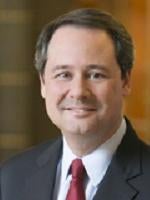On March 20, 2014, FERC approved a proposal by the North American Electric Reliability Corporation (NERC) to revise the definition of bulk electric system (BES), finding that the proposed definition improves reliability by focusing on core facilities that present the greatest risks of reliability failure. FERC explained that the revisions help ensure that the definition encompasses all facilities necessary for operating the interconnected transmission network.[1] The revised definition will become effective on July 1, 2014.
Previously, in Order No. 743, FERC had directed NERC to maintain a bright-line threshold that includes all facilities operated at or above 100 kV, except defined radial facilities, and to eliminate the Regional Entity discretion to define the scope of the BES without NERC or FERC review.[2]
In Order No. 773, FERC had approved NERC’s proposed BES definition, including the 100 kV bright line, as well as provisions to include and exclude facilities from the “core” definition. Order No. 773 also directed NERC to (1) modify the exclusions to ensure that generator interconnection facilities at or above 100 kV connected to BES generators identified in inclusion I2 (generating resources) are not excluded from the BES and (2) modify exclusion E3 (local networks) to remove the 100 kV minimum operating voltage to allow systems that include one or more looped configurations connected below 100 kV to be eligible for the local network exclusion.[3]
On March 20, FERC approved NERC’s second round of revisions to aspects of the BES definition, including exclusions E1 (radial systems), E3 (local networks), and E4 (reactive power devices). Exclusion E1 now includes a note that allows for a configuration where two radial systems are connected by a contiguous loop of 50 kV or less to qualify for the radial facilities exclusion. NERC also removed the requirement that local networks be operated at or above 100 kV from the definition of local networks in exclusion E3. As a result, facilities need not meet a minimum voltage level to qualify for the local networks exclusion.
NERC revised exclusion E4, covering reactive devices, to remove ownership implications. This expands the definition of reactive power to apply not only to devices owned and operated by retail customers solely for their own use but also to devices installed for the sole benefit of a retail customer regardless of their ownership.
FERC also approved NERC’s proposed revisions to inclusion I4 so that it captures collector systems from the point where the gross nameplate capacity aggregates to greater than 75 MVA to a common point of connection at a voltage of 100 kV or above. FERC agreed with NERC that, in light of the increase in nontraditional forms of generation, such as wind and solar, continuing to include individual generation units in the scope of the definition is appropriate to ensure that the units are subject to Reliability Standards where it is necessary to support reliability.
FERC rejected arguments to exclude individual power-producing resources, such as individual wind turbines, from inclusion I4, stating that “[t]he purpose of inclusion I4 is to include all forms of variable generation resources”[4] and explaining that this was appropriate because of the effects those resources can have on system reliability. FERC explained that wind producers could work with NERC to modify the applicability of certain Reliability Standards if they believe that applying all of the relevant generator-related Reliability Standards to individual turbines would be unnecessarily burdensome.
[1] North American Electric Reliability Corp., 146 FERC ¶ 61,199 (2014).
[2] Revision to Electric Reliability Organization Definition of Bulk Electric System, Order No. 743, 133 FERC ¶ 61,150 (2010), order on reh’g, Order No. 743-A, 134 FERC ¶ 61,210 (2011).
[3] Revisions to Electric Reliability Organization Definition of Bulk Electric System and Rules of Procedure, Order No. 773, 141 FERC ¶ 61,236 (2012), order on reh’g, Order No. 773-A, 143 FERC ¶ 61,053 (2013), order on reh’g and clarification, 144 FERC ¶ 61,174 (2013), appeal pending sub nom., People of the State of New York and the Pub. Serv. Comm’n of New York v. FERC, No. 13-2316 (2d Cir. filed June 12, 2013).
[4] Id. at P 48 (emphasis added).




 />i
/>i

